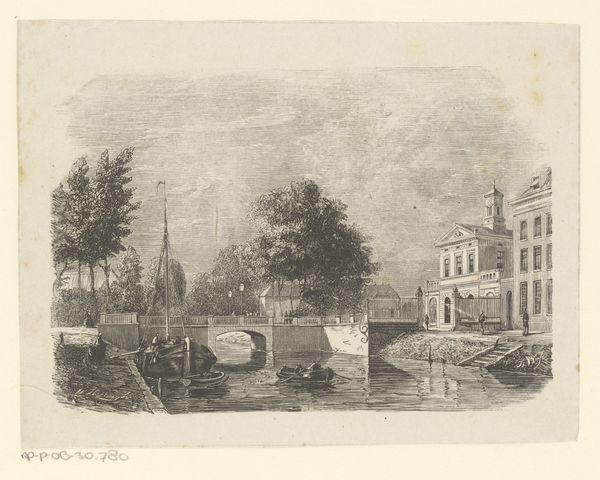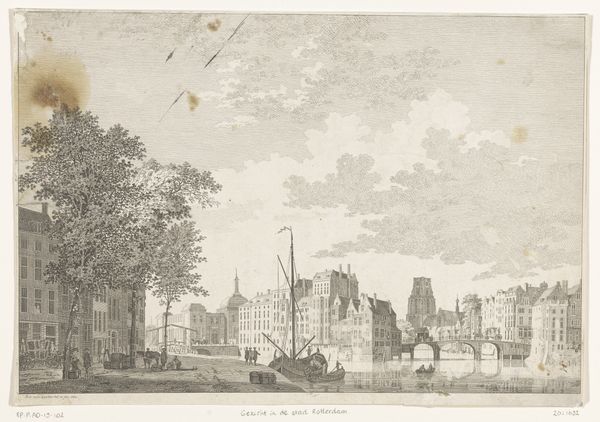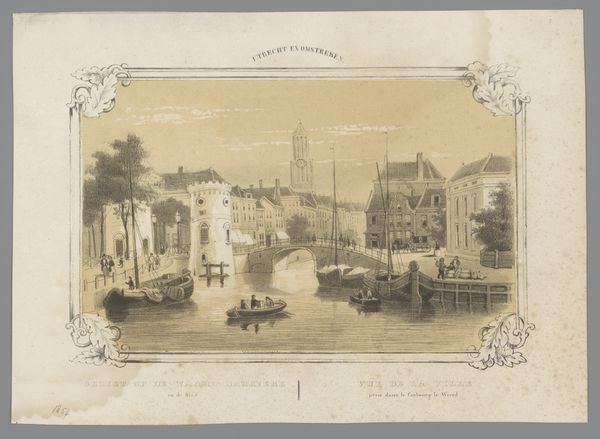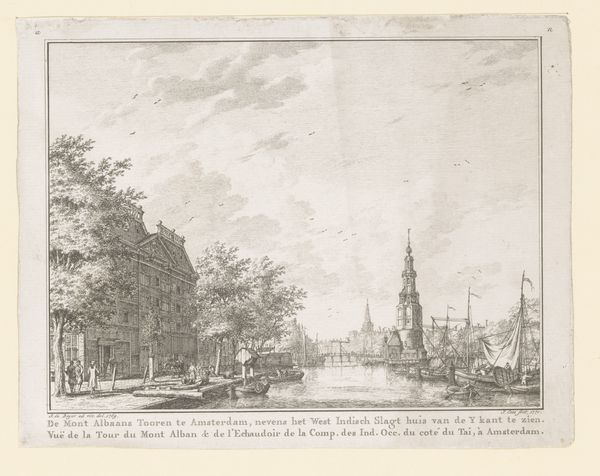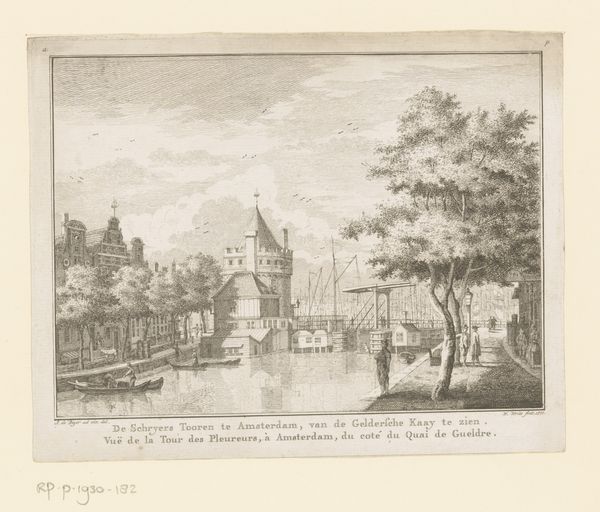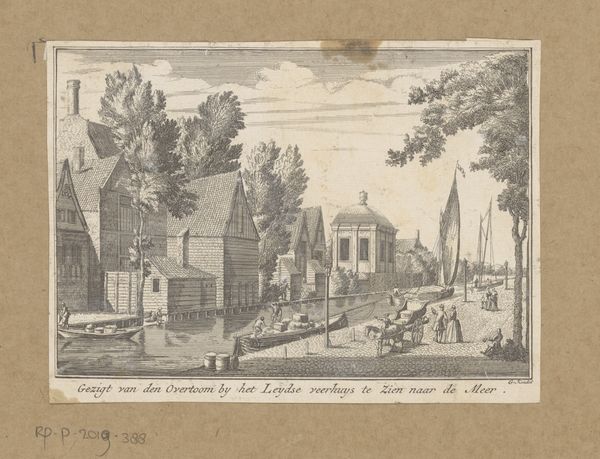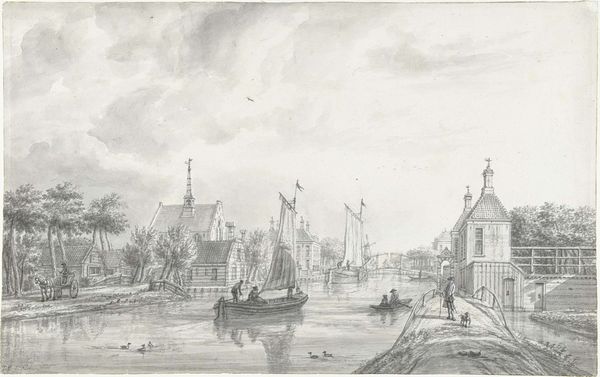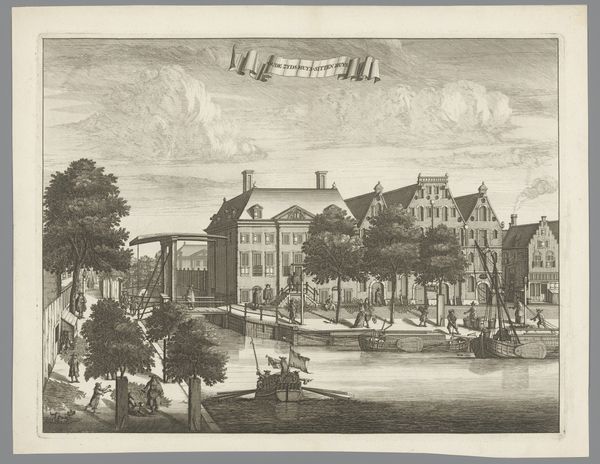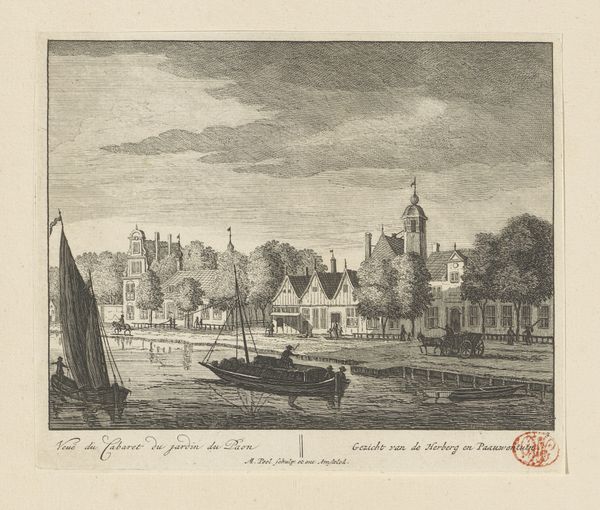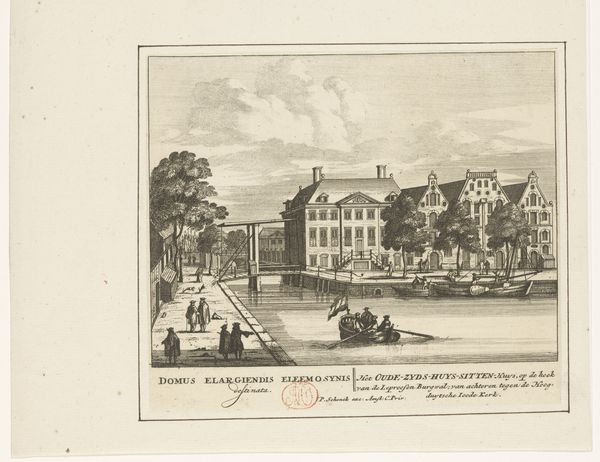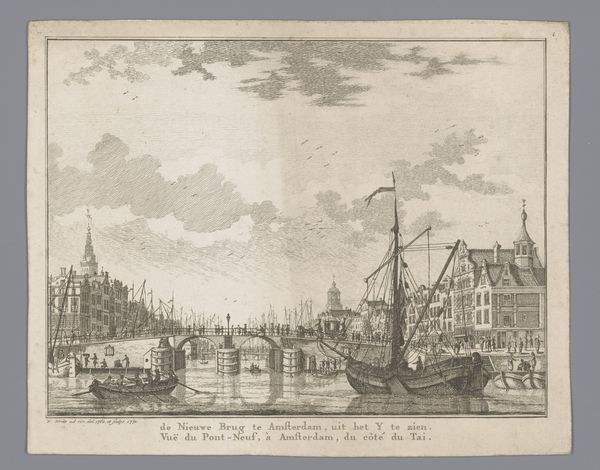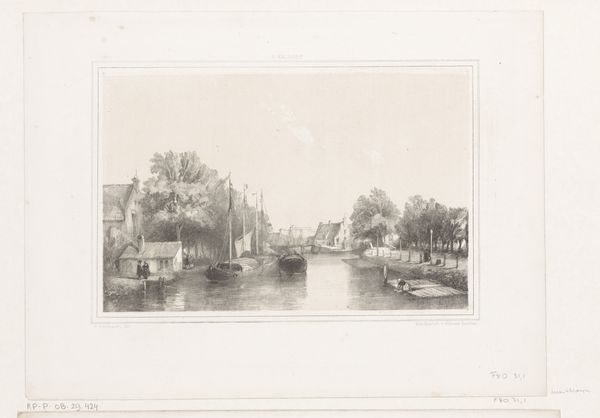
The Old Stock Exchange (Koopmansbeurs), Rotterdam, seen from the East, with the Kolk and the Beursplein in the Foreground 1750
0:00
0:00
drawing, print, etching
#
drawing
#
baroque
#
dutch-golden-age
# print
#
etching
#
landscape
#
geometric
#
cityscape
Dimensions: Sheet: ca. 10 1/16 × 14 3/16 in. (25.5 × 36 cm)
Copyright: Public Domain
Editor: Here we have Jan de Beijer's "The Old Stock Exchange, Rotterdam," created around 1750. It’s an etching and drawing that presents a captivating view of the cityscape. I'm struck by how the architecture dominates the scene. What elements of visual language stand out to you in this artwork? Curator: The success of this etching lies primarily in the organizational harmony of its spatial composition, in my opinion. Observe how the artist masterfully balances the geometric rigidity of the buildings with the fluid lines of the water and sky. Notice too, how he creates depth. Editor: You're right, I see how the overlapping of elements guides our eyes from the foreground, with the boats and figures, back to the Exchange itself. How does the tonality factor into the overall effect? Curator: Note the limited tonal range, moving mostly in grays, which contributes to the subtle variations in surface and texture that are represented with precision. Consider the interplay of light and shadow across the facades. Ask yourself, does the controlled use of light emphasize form, drawing the viewer's eye to specific architectural details, while contributing to the overall atmosphere of tranquility and order? Editor: It really does create that effect. It's interesting to focus on the technical aspects of the image in order to appreciate the piece more. It helps highlight the intent behind what might appear, at first glance, as a simply representational work. Curator: Precisely. By examining the formal properties, we understand that this is not merely a record of Rotterdam, but a calculated and artful construction. Consider, though, what gets overlooked with a purely formal approach, such as lived experiences? Editor: I guess a more comprehensive approach that combines formalism and cultural context offers a richer appreciation. Thanks for this perspective!
Comments
No comments
Be the first to comment and join the conversation on the ultimate creative platform.
